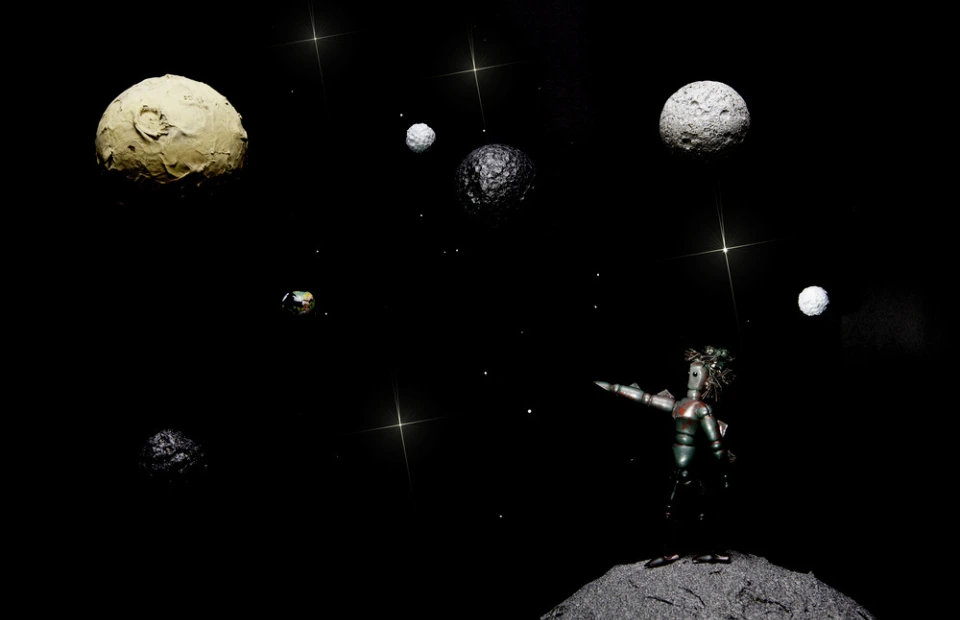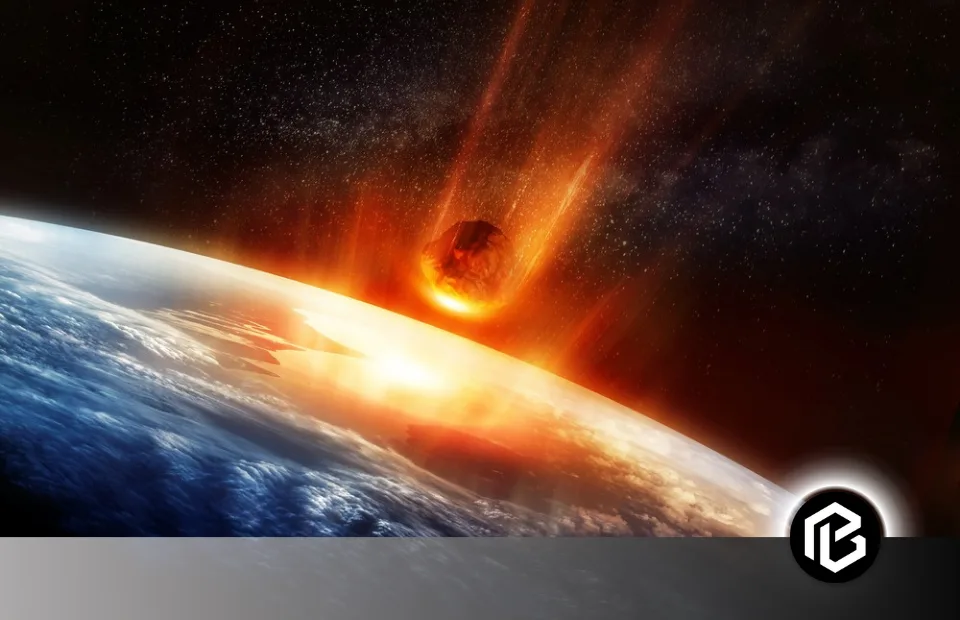The universe is so big that life must exist somewhere. Our Milky Way galaxy is massive but has a few hundred billion stars. Then you know that there are several hundred billion other galaxies.
According to American Scientist, data from extrasolar planets so far doesn't change estimates that humans are probably alone in the universe.
Astronomy gets to the heart of our big questions as scientists, but your questions as human beings: where do we come from? And how do we get here, and then how big are we? Alone, every assumption that man has ever made about space has been wrong from the early days.
When you thought you were the centre of the universe, they thought the sun was the centre of the universe. The Earth was flat, so there is no reason why you can’t believe you are wrong. Now, if you think that life on Earth is the only life out there, the James Webb Space Telescope will indeed study the atmospheres of exoplanets with its capabilities to find evidence of life beyond the Earth.
- Human Fascination with Extraterrestrial Life
- The Search for Life Beyond Earth
- Scientific Revolution and the Emergence of Astrobiology
- The Historical Quest for Extraterrestrial Life
- Conditions for Life Beyond Earth
- The Search for Extraterrestrial Intelligence (SETI)
- The Fermi Paradox
- Conclusion
- Frequently Asked Questions on are we alone in the universe
Human Fascination with Extraterrestrial Life
Extraterrestrial life refers to the life that may have existed outside of Earth space in the universe. The human curiosity with this life raises many intriguing questions. What are the necessities for life? Can life arise from another place in the solar system? Is life possible on other planets like Earth? How accurate is the discovery of intelligent life?
However, astrobiology says that life beyond Earth may not be found because evidence of existence has yet to be found.

The Search for Life Beyond Earth
Extraterrestrial life has become so popular in pop culture that it has sparked the convention. Alien Cons used to happen at the weekends at the Pasadena Convention Center. Alien enthusiasts are passionate about discovering more about outer space and the existence of intelligent life in the cosmos.

Webb or similar spacecraft could detect the presence of oxygen, another gas carbon dioxide, and methane in the future. This will strongly indicate that life is possible in that space of the universe. Future telescopes would be able to show the signs of photosynthesis. They will show the conversion of light into chemical energy that will confirm the existence of plants. Moreover, the presence of gases or molecules detected by the telescope will suggest the existence of animal life.
Scientific Revolution and the Emergence of Astrobiology
Astrobiology refers to the study of all life that exists anywhere in the universe, including Earth, and exobiology has replaced it. Exobiology studies extraterrestrial life exclusively, and it is being criticized as a science that lacks subject matter. Although astrobiology respects the possibility that the evidence of life on Earth may never be found, it also recognizes the importance of exobiology. It forces critical examination of the general assumptions derived from the existing life on Earth.
The Historical Quest for Extraterrestrial Life
The scientific strategy to find habitable planets other than the Earth is still in its beginning. The history of speculations about this concept is much more ancient. The West and the Christian world have done extensive research in this field. Despite all the studies, the ‘History of Extraterrestrial Life Debate’ has yet to become well-known.
Philosophical Implications and Scientific Perspectives
Let’s discuss the significant events in history on different levels of extremes.
The viewpoint of ancient Greeks fell into two extremes. The well-known atomist Epicurus suggested in favour of the existence of an infinite number of worlds. The atomist school, developed on the teachings of Leucippus and Democritus, proposed that atoms in indivisible blocks of matter were infinite in number and moved in random motion.
They concluded such random motions bring together and form a new world. They called them geocentric universes with an Earth, a moon, a sun, and planets, with stars at the crystalline vault. But the life on Earth had no means of communication with those other worlds. A multiverse is a concept that is similar to the modern concept of multiple universes.

Conversely, two giant Greek philosophers, Plato and Aristotle, argued against the plurality of worlds. Plato made the argument philosophically, but Aristotle directly contradicted the idea of a multiverse with the concept of physics.
Aristotle argued that the existence of two Earths implies the existence of two centres in the universe. He regarded it as an absurd notion. Muslim scholars and Christian Churches accepted Plato’s philosophy and Aristotle’s concept.
Cultural Perspectives
In 1277, a momentous event resulted in favour of the existence of extraterrestrials. The circulation of Aristotle’s work commentaries by Averroes, a Muslim philosopher, aroused the Pope’s suspicion. He put forward Averroes’s commentaries, in which he implied a limit on the power of God. It had a direct bearing on the polarity of the world.
This was a direct contradiction with the supremacy of God. If God wishes, he could make many worlds. After this event, people began searching for the existence of other worlds more frequently, which eventually led to the discovery of the multiverse.
2oth Century Perspective
Then, the debate on the multiverse took a further leap in the 16th century. Moving up to the 20th century, the development of spectroscopy concluded that almost all planets in the solar system are not habitable.
Many of their ideas suggest that stars serve as suns for planetary systems around them, which was physically impossible. During the first half of the 20th century, planetary systems were relatively rare.
The next-generation telescope capability will peek into these alien worlds to search for bio-signatures, such as gases like oxygen, that would show the signs of the existence of life on the planet. Until then, we can only carry the ancient speculations of terrestrial existence.
Conditions for Life Beyond Earth
If Alien life exists, it will not have the exact requirements of Earthlings. It’ll depend on these given five things:

Water
NASA’s solar system exploration program is driven by water. Scientists will focus their attention wherever there is a chance of water anywhere in the planetary system. The movement of molecules is a requirement for life. The random motion of these molecules allows organisms to carry out chemical reactions to take in energy and eliminate waste. That molecule on the Earth is water.
However, if another fluid, such as methane, formamide, or sulfuric acid, allows exotic existence to flourish, then life anywhere in the universe seems almost inevitable.
Carbon
Carbon is necessary for life as it can take many forms, from long chains to complex geometric structures. The compounds that support organic or carbon-based life couldn’t exist.
According to scientists, life in the universe can be based on chemical systems entirely different from ours. Until then, they’re searching to look for carbon-based life.
Energy
For life to exist on Earth, it requires a source of energy from the sunlight through different phenomena and food chains. Aliens, if they live, soak up rays from the stars and can rely upon heat from geological activity. Some life forms can’t get energy directly from the sun, so they fulfil their requirements from deep hypothermal vents that pump out hot water.
Time
For doing anything, the genesis of life requires time. Your universe is nearly 14 billion years old, and a billion years is a short time if life could take hold until about a billion years later. Starting life, you know, takes time.
So, if we want to find life in a distant world, I should focus on the planets that orbit long-lived stars. But they die young. There are probably better places to search for life. Small stars can live trillions of years but emit flares that can destroy planets.
Luck
Threats to life are everywhere, and sufficiently advanced lifeforms can manipulate the environment to prevent specific scenarios from occurring. The chance of surviving eventually comes down to luck.
All these five requirements are based on the supposition that alien life shares the same biological architecture as life on Earth, which is a huge assumption.
The Search for Extraterrestrial Intelligence (SETI)
The likelihood of finding another intelligent civilization lies in factors expressed in Drake’s equation. It estimates a fraction of the stars with the planets that shelter intellectual life. These factors show the analysis of which planets would have habitable conditions.
Communicated differently, the pessimistic view says that intelligent life is rare, but the optimistic view suggests that there is an intelligent civilization for every 50 stars in the Galaxy.

Present technology could support the construction of Von Neumann’s machine, which would explore another solar system. Also, it would search out construction materials and energy resources to replicate and send the next generation of exploring spacecraft to other stars.
Given the above certainties and the cost of space exploration, SETI has been the chosen approach to detect radio signals from other civilizations. The first effort for SETI was made in 1960 through Project Ozma. While it is a tiny part of the astronomical investigation, the enthusiasm for continuous exploration is strong.
The Fermi Paradox
Fermi, a late Italian physicist Enrico Fermi, asked, “Where are they?” He pointed out a statement that the Galaxy has already been considered and explored based on assumptions if you assume that civilization has advanced the technological ability to explore space.
The present human technology will allow expansion at the rate of 100 km/s, which is near a travel distance of 1pc in 10,000 years. This is much slower for human beings to travel near stars. But spacecraft could be sent there, and discoveries will return slowly to Earth by radio transmissions.
Conclusion
There is a possibility that Aliens, or human-like creatures, will be discovered in outer space to serve as cosmic examples of convergent evolution. Many Space Exploration Robotics are sent into the space.
The discovery of any living matter other than human beings elsewhere in the cosmos would be of tremendous significance. On the other hand, if no such evidence is found, that would also be an excellent scientific observation. As a result, life would become more responsible for protecting its diversity and biosphere, which includes precious, cosmically fragile human civilizations.
Frequently Asked Questions on are we alone in the universe
What is the Drake Equation, and how does it relate to the search for extraterrestrial life?
The Drake Equation is a probabilistic formula proposed by astrophysicist Frank Drake in 1961 to estimate the number of detectable extraterrestrial civilizations in the Milky Way galaxy. It takes into account factors such as the rate of star formation, the fraction of stars with planets, and the likelihood of life arising on habitable planets.
What are some methods scientists use to search for extraterrestrial life?
Scientists use various methods to search for extraterrestrial life, including astronomical observations of exoplanets, analysis of biosignatures in planetary atmospheres, listening for radio signals or other forms of communication from intelligent civilizations, and studying extremophiles on Earth to understand the limits of life.
Have we found any evidence of extraterrestrial life so far?
While there have been intriguing discoveries, such as the detection of organic molecules on Mars and the identification of potentially habitable exoplanets, we have not yet found definitive evidence of extraterrestrial life. However, ongoing research and exploration efforts continue to push the boundaries of our understanding.
What are the implications of discovering extraterrestrial life?
The discovery of extraterrestrial life would have profound implications for science, philosophy, and society as a whole. It would fundamentally alter our understanding of the universe, our place in it, and the nature of life itself, potentially leading to new insights into the origins and diversity of life.





